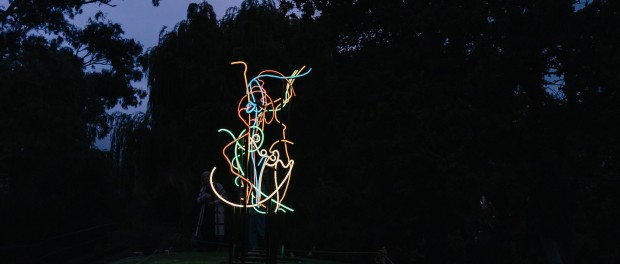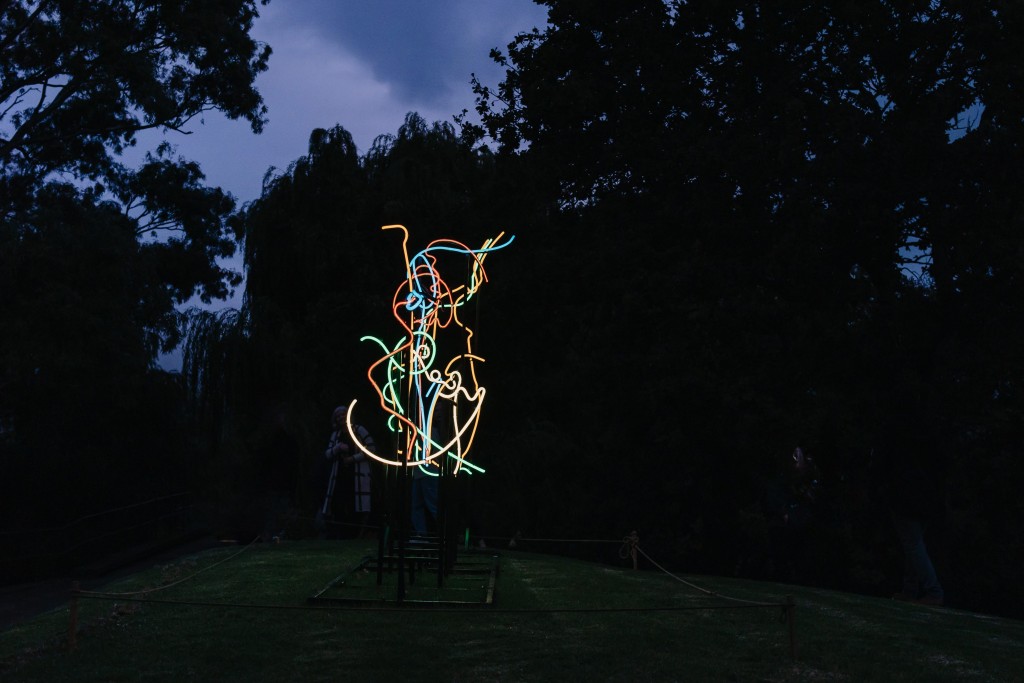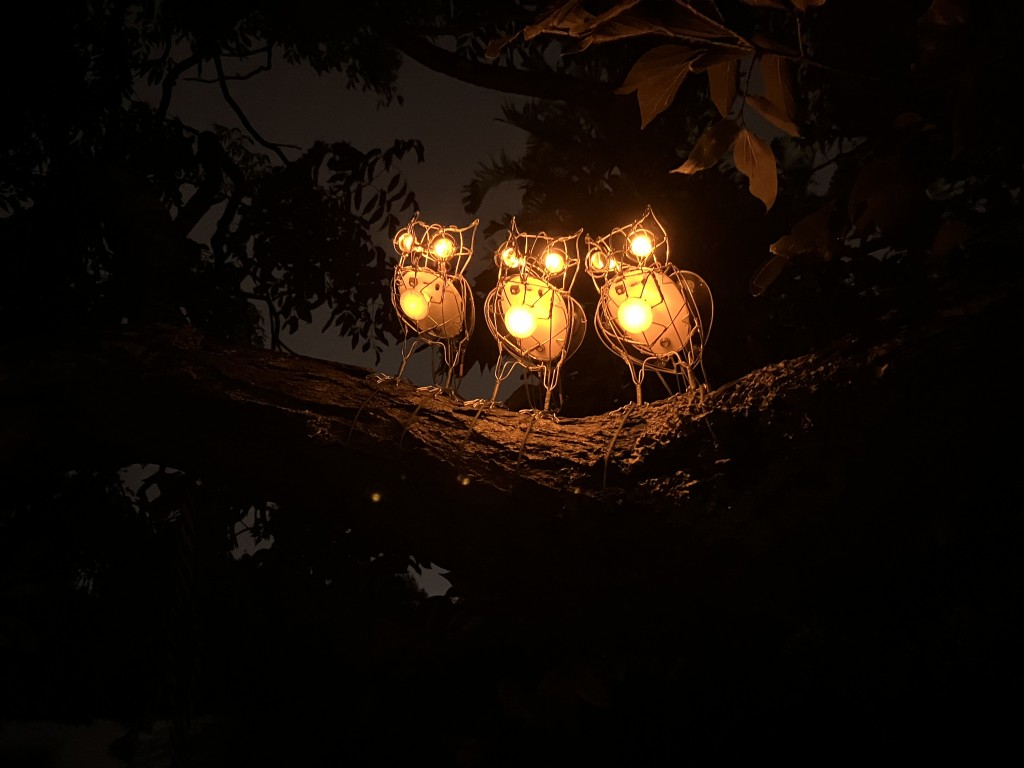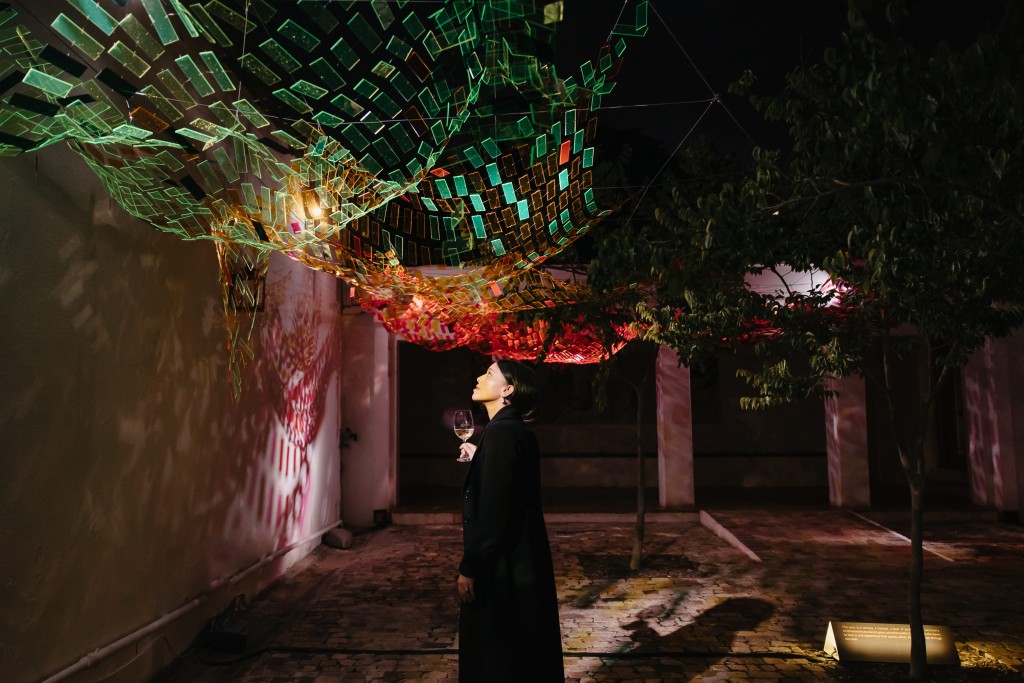Artist highLIGHTS for Spier Light Art 2023

Exploring various themes, Spier Light Art delves into the ethereal and the whimsical, the political landscape, humanity’s changing relationship with technology, tenacity in the face of adversity, and Spier’s unique history.
Here we take a look at some of the installations featured in Spier Light Art 2023:
Orpheus by Georgia Munnik
In the Greek tragedy, Orpheus loses his dead wife Eurydice a second time as he fails to fulfil the condition of bringing her back to life: not to look back at her as she crosses the threshold from dead to living. The artwork’s title, ‘Orpheus’, refers to the colonisation of Stellenbosch and the incessant gaze of historically white wine farmers looking at the soil as a resource.
‘Orpheus’ is a glass neon light sculpture derived from a digital rendering of a font that the artist developed from the Australian parasite plant, dodder. The parasite plant cannot photosynthesise; instead, it extracts nutrients from host plants through suctioning tendrils. Dodder’s ‘long strings of cursive writing’ inscribes its tendrils on host plants, strangling them while calling things into being – one cannot invoke without naming and the parasite font forms words to call to them.
Corset Intransit by QUEEZYBABAZ and Christina Fortune
Corset Intransit explores the corset’s history and how it has shaped ideas of the female form over time, first by the patriarchy and then by womxn in fashion. “Intransit” – meaning to travel or be taken from one place to another – uses the corset to transcend the idea of shape and form. Trans bodies are questioned by society much like the corset, and the sculpture examines both, with Queezy’s torso used as a reference as they identify as trans feminine.
Corset Intransit levitates above the dam, with the corset transcending both the physical and spiritual worlds. The sculpture will be illuminated at night with ambient light and there will be a sound piece with voices of trans women sharing their stories of daily life and what it would feel like to transcend in their lives.
Zizis by African Robots (Ralph Borland and Serai Dowling)
Zizis – the Shona word for owl – is a wire-art, solar-powered night light for children. In the dark, its eyes light up and a brighter light on its chest provides a reading lamp. Open up Zizi’s wings and charge it on a window sill. Zizi is based on the small Scops owl, found across Southern Africa. It really is this small, about as tall as a soft-drink can. Zizi introduces children to the natural world through a friendly guardian in the dark. Made from wire art – a creative means of subsistence for artisans in Southern Africa – Zizi delights and enchants, reflecting human resilience and ingenuity in the face of stress and economic hardship. The installation is produced by Serai Dowling.
Molimo O Nko E Metsi by Tseliso Monaheng
Molimo O Nko E Metsi is an abstract visual and sonic response to Monaheng’s memories of growing up in Lesotho and visiting his grandfather in the mountains. Combining two mediums, the artwork extends the boundaries of imagination, peeking into the past and meditating on the future. It represents beauty, futurism, love, ancient wisdom – at once traditional and African, a citizen of the displacement that Southern African people have suffered since Mfecane War times.
The work negotiates migration politics by placing the rural in the urban, questioning belonging and identity. Cows – significant in many cultures – abound in Sesotho proverbs: moshanyana se llele ho lisa, likhomo li kopanya malapa, as well as the title of the work, which translates to ‘the god with a moist nose’.
Everyday Wear by Karla Nixon
Exploring the concepts of textile, landscape, and the space in which they meet, Everyday Wear is a site-specific work that adorns fixed structures and the empty space between them. The piece invites the viewer to experience a world transformed by synthetic colours and consider how light and colour affect the experience of space and place. When standing inside the work and looking outwards, the structure changes the outside and inside environments.
The work is a canopy, a blanket, a layer of protection, a sanctuary, emphasised by the stained-glass cathedral quality. It encourages the viewer to look at and experience their space, place, and themselves through new eyes.





![DC_Rockwell_Tidal_F[1]-2](http://designnews.co.za/wp-content/uploads/2016/04/DC_Rockwell_Tidal_F1-2-70x53.jpg)


